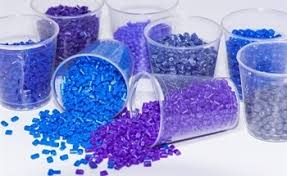Exploring the Versatility of Thermoplastic Materials

The Versatile World of Thermoplastic
Thermoplastic is a material that has revolutionised various industries with its versatility, durability, and ease of use. From road markings to industrial applications, thermoplastic has become a popular choice for many projects due to its numerous benefits.
What is Thermoplastic?
Thermoplastic is a type of polymer that becomes pliable or moldable above a specific temperature and solidifies upon cooling. This unique property allows it to be heated, shaped, and reshaped multiple times without undergoing significant chemical change.
Applications of Thermoplastic
One of the most common applications of thermoplastic is in road markings. The use of thermoplastic for road markings offers several advantages over traditional paint, including increased durability, better reflectivity, and resistance to wear and tear from traffic.
In addition to road markings, thermoplastic is widely used in the manufacturing industry for creating various products such as pipes, containers, packaging materials, and automotive components. Its ability to be easily moulded into complex shapes makes it a preferred choice for many manufacturers.
Benefits of Thermoplastic
- Durability: Thermoplastic is known for its excellent durability and resistance to harsh weather conditions, making it ideal for outdoor applications.
- Easy Application: The application process of thermoplastic is relatively simple and quick compared to other materials, saving time and labour costs.
- Environmentally Friendly: Many types of thermoplastics are recyclable and can be melted down and reused multiple times without losing their properties.
- Versatility: Thermoplastic can be formulated with various additives to enhance specific properties such as UV resistance, flame retardancy, or flexibility.
In Conclusion
Thermoplastic has undoubtedly made a significant impact across different industries by offering a cost-effective solution with exceptional performance characteristics. Its versatility and adaptability continue to drive innovation in product design and development worldwide.
Five Key Advantages of Thermoplastics: Durability, Versatility, Cost-Effectiveness, Resistance, and Recyclability
Drawbacks of Thermoplastics: Limited Heat Resistance, Susceptibility to Creep, Chemical Vulnerability, and Higher Costs
- Limited heat resistance
- Susceptible to creep
- Vulnerability to chemical exposure
- Higher cost than traditional materials
Durable
Thermoplastic is highly regarded for its outstanding durability, making it a preferred choice for applications that require long-lasting performance. Its ability to withstand harsh environmental conditions and resist wear and tear over time ensures that thermoplastic remains in top condition, providing reliable and sustainable solutions for various industries. Whether used in road markings, industrial equipment, or consumer products, the durability of thermoplastic contributes to its reputation as a reliable and cost-effective material for long-term use.
Versatile
Thermoplastic’s versatility is a standout feature, allowing it to be effortlessly moulded into a wide array of shapes and forms to meet diverse requirements. This flexibility in shaping makes thermoplastic an ideal choice for applications where customisation and adaptability are paramount, enabling manufacturers to create products that align precisely with specific design needs and functionality.
Cost-effective
The cost-effectiveness of thermoplastic lies in its efficient application process, which is quick and streamlined, resulting in significant time and labour cost savings. Unlike traditional materials that may require more intricate application methods, thermoplastic can be applied swiftly and with ease, making it a practical choice for projects where efficiency is paramount. This advantage not only reduces the overall project costs but also ensures a faster completion time, benefiting both the budget and timeline of various applications.
Resistant
Thermoplastic materials boast exceptional resistance to harsh weather conditions, chemicals, and wear, making them a durable choice for various applications. This resistance ensures that thermoplastic products maintain their integrity and longevity even when exposed to challenging environments, contributing to their reliability and cost-effectiveness in the long term.
Recyclable
Many types of thermoplastics are recyclable, contributing to sustainability and environmental responsibility. The ability to recycle thermoplastic materials helps reduce waste and minimise the environmental impact of plastic production. By promoting recycling practices, thermoplastics play a crucial role in supporting a more sustainable and eco-friendly approach to material usage, benefitting both present and future generations.
Limited heat resistance
Some thermoplastics exhibit a drawback in their limited heat resistance when compared to thermosetting plastics. This limitation can restrict their suitability for high-temperature applications where materials need to withstand elevated temperatures without deformation or degradation. The reduced heat resistance of certain thermoplastics underscores the importance of selecting the appropriate material based on the specific requirements of the intended application to ensure optimal performance and longevity.
Susceptible to creep
Certain thermoplastics are susceptible to creep, a notable con where the material can deform over time under constant load or stress. This phenomenon can compromise the structural integrity and dimensional stability of products made from these thermoplastics, highlighting the importance of selecting the appropriate material based on the intended application to avoid potential issues related to creep deformation.
Vulnerability to chemical exposure
Thermoplastic materials, despite their many advantages, are susceptible to chemical exposure, which can compromise their integrity and longevity. When exposed to certain chemicals, thermoplastics may undergo degradation, resulting in a decline in performance and durability over time. This vulnerability to chemical substances highlights the importance of careful consideration when selecting thermoplastic materials for applications where exposure to corrosive or reactive agents is a concern.
Higher cost than traditional materials
In certain scenarios, one significant drawback of thermoplastic is its higher cost compared to traditional materials. The initial investment required for thermoplastic materials and processing equipment can be more expensive than conventional alternatives. This higher cost factor may deter some potential users or projects from opting for thermoplastic solutions, despite the material’s numerous benefits and advantages.
